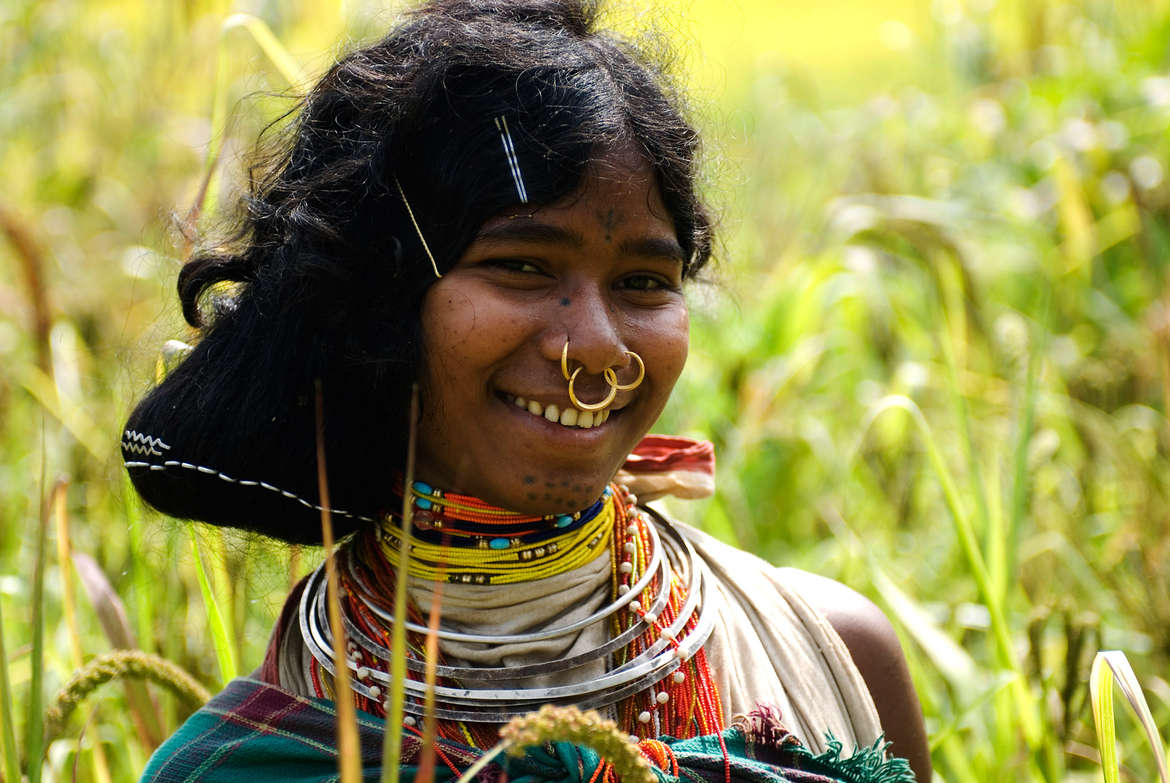
“Unless we affirm our culture and right and language, we won’t live. Our colour is good, our language is good, our art is good, our way of living is good. If we can respect your religion and your practices, why can’t you respect ours?” – G. Thenadikulam, Wayanad District
“We say, ‘you don’t have to take care of us. We’ll take care of ourselves. We’ll lead our lives the way we know.” – Arjun Chandi, Majhi Kondh
“Land is what will see us through, not only us but our children. We will not give up our land for anything in this world. If we give our land for mining it will not make our lives any better. In fact, we will end up with no jobs, no land and no home.” – S. Pollanna, Ananthagiri
“[The Jarawa’s] knowledge of indigenous plants, herbs, diseases, and creatures of the jungle is immense and needs no schooling. No one can really educate them further. It is we, who need to be educated because soon all this knowledge will evaporate, with the immanent danger of the extinction of the tribe.” – Anvita Abbi, Professor of Linguistics, Jawaharlal Nehru University
Source: Proud not primitive info – Survival International
Address: http://notprimitive.in/not-primitive-info
Date Visited: 21 September 2022
Creation myths reside in every community, tribal or non-tribal. They are sung and narrated every time with the same gusto and enthusiasm as must have been rendered the very first time when they were formed. They inform us of various kinds of beliefs and norms or codes of conduct that the society adheres to. All these are imbibed in rituals that give sanctity to such beliefs. Creation myths are good indicators of the history of civilization as recorded in the society in oral form. These are documents of collective memory. They contain traditional knowledge of our indigenous ecological environment. […]
In the Santal creation myth, a pair of birds was created first and humans were created later. It was the eggs of the birds which were hatched into human figures. On the contrary, in the Great Andamanese language, it is the human who was created first – a male one, then a female and the children. All the humans were transformed into birds aka Jiro Mithe, an interesting story of the birth of avian diversity. It also informs us why Great Andamanese people do not eat birds; it is because birds are considered to be their ancestors.
Similarly, the belief that there is a world outside the existing world is an age-old phenomenon in Sanskrit literature. However, Great Andamanese people, who are the remnants of the first migration of human beings out of Africa 70,000 years ago, believed in it as it is reflected in their creation myth (Abbi 2012a). The five elements of life of which our Vedas talk about was first mentioned in the creation myth of the Great Andamanese people, which symbolizes the culture of the first settlers of South and Southeast Asia, implying thereby that it is universal and recognized by the oldest civilization on earth. These five elements are water, earth, fire, sky and space. […]
Prof. Anvita Abbi, formerly Professor of Linguistics, Jawaharlal Nehru University, New Delhi, is known for her pioneering work on many tribal and minority languages of South Asia. She has authored eighteen books, among them An Ancient Tale from Andaman (2012), Dictionary of the Great Andamanese Language (2012), Grammar of the Great Andamanese Language: An Ethnographic Study (2013), Jiro Mithe (2013) and Unwritten Languages of India (2017) and Route to Oral Literature(2018). She has occupied teaching positions at the Max Planck Institute of Evolutionary Anthropology, Leipzig, Germany, and at the La Trobe University, Melbourne, Australia, among others. For her outstanding work on the highly endangered languages of the Andaman Islands, she was conferred with the Rashtriya Lok-Bhasha Samman in 2003, the Padmashri Award in 2013 and the Kenneth Hale Award in 2015.
She has also been the Honorary Director of the Centre of Oral and Tribal Literature, Sahitya Akademi, New Delhi, and the President of the Linguistic Society of India. Presently she is holding the B.B. Borkar Chair of Comparative Literature, Goa University. She may be contacted at the email ID: [email protected]
Source: “Adivasi Creation Myths: An Enquiry into Our Beginnings”, The Johar Journal, Issue 01, July-Dec 2020
URL: https://joharjournal.org/adivasi-creation-myths-an-enquiry-into-our-beginnings/
Date visited: 21 September 2022
See also
Adivasi Academy & Museum of Adivasi Voice at Tejgadh | Lecture “A View of Higher Education in India”
Appropriate education for Adivasi children – the Vidyodaya School model at Gudalur
Childhood | Children’s books | Childrens rights: UNICEF India | Safe search
People’s Linguistic Survey of India | Volumes (PLSI) | PeoplesLinguisticSurvey.org
Multi-lingual education | Residential school | Ekalavya
Multilingual education is a pillar of intergenerational learning – Unesco
Santali education | Teaching Santal children by Boro Baski
Unesco | Unicef | Unicef India | United Nations
United Nations International Days and Weeks
Video | “Nations don’t make us human – languages make us human”: Ganesh Devy
Women | Safe search | President Droupadi Murmu on women’s empowerment